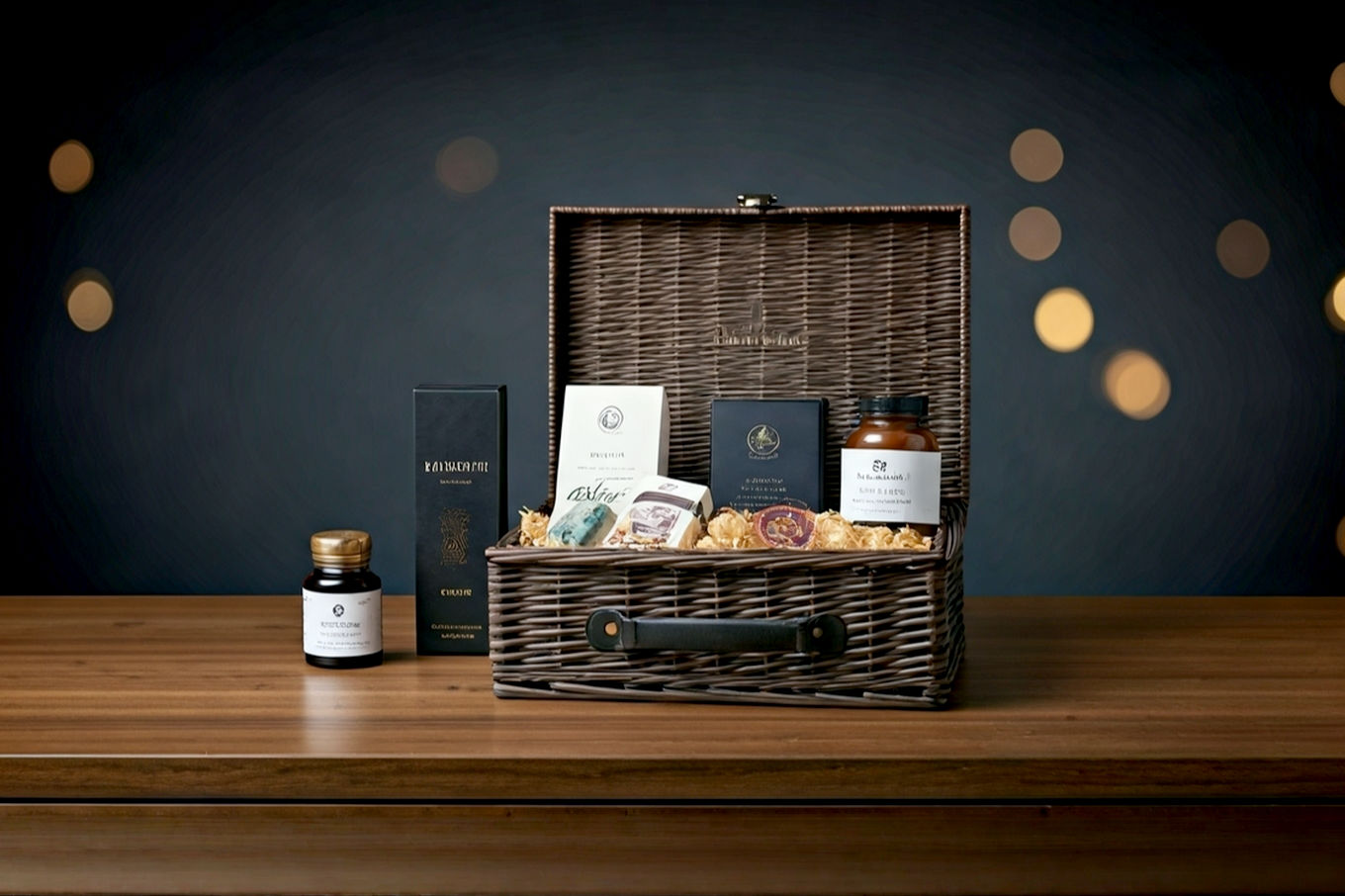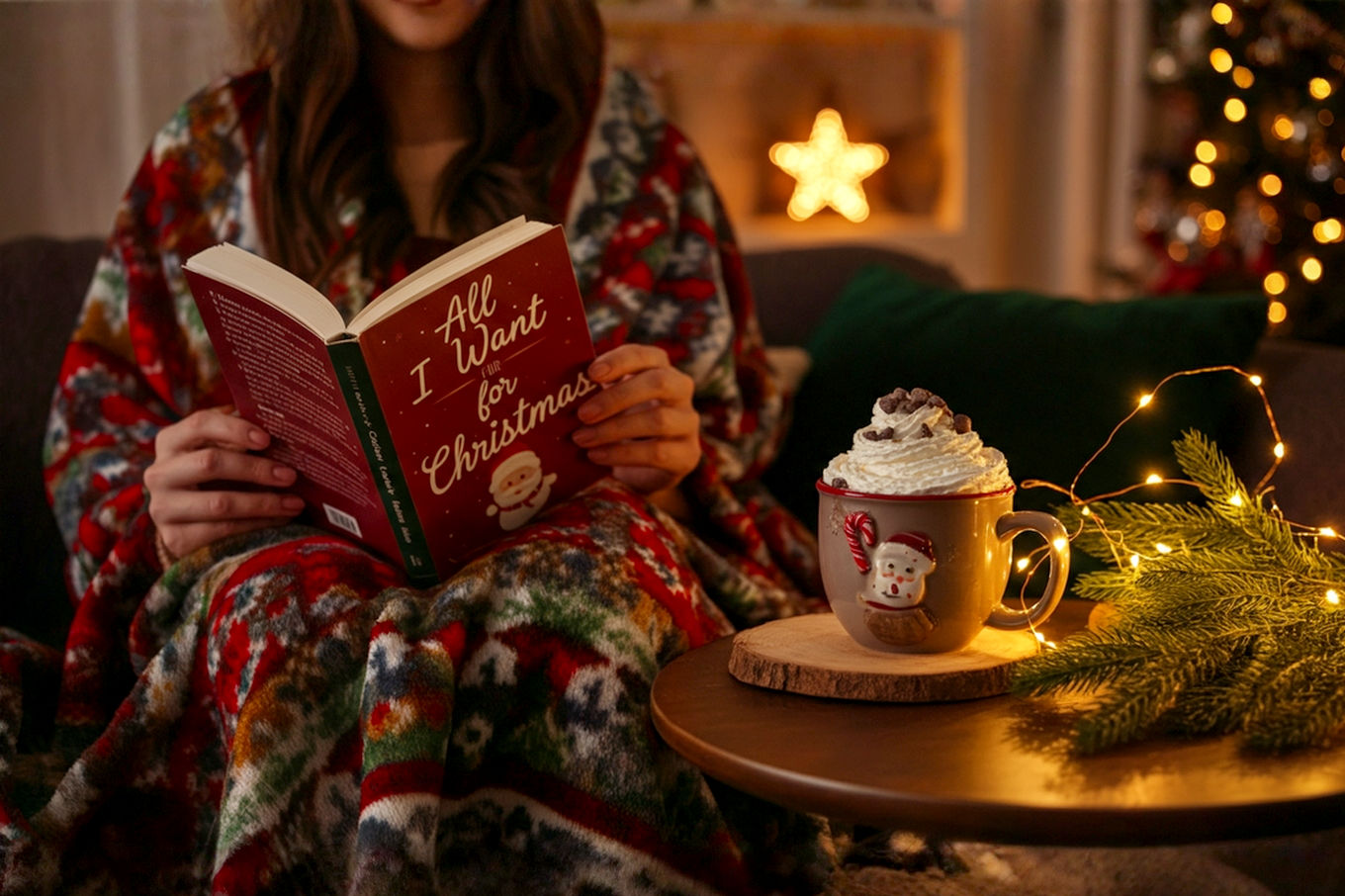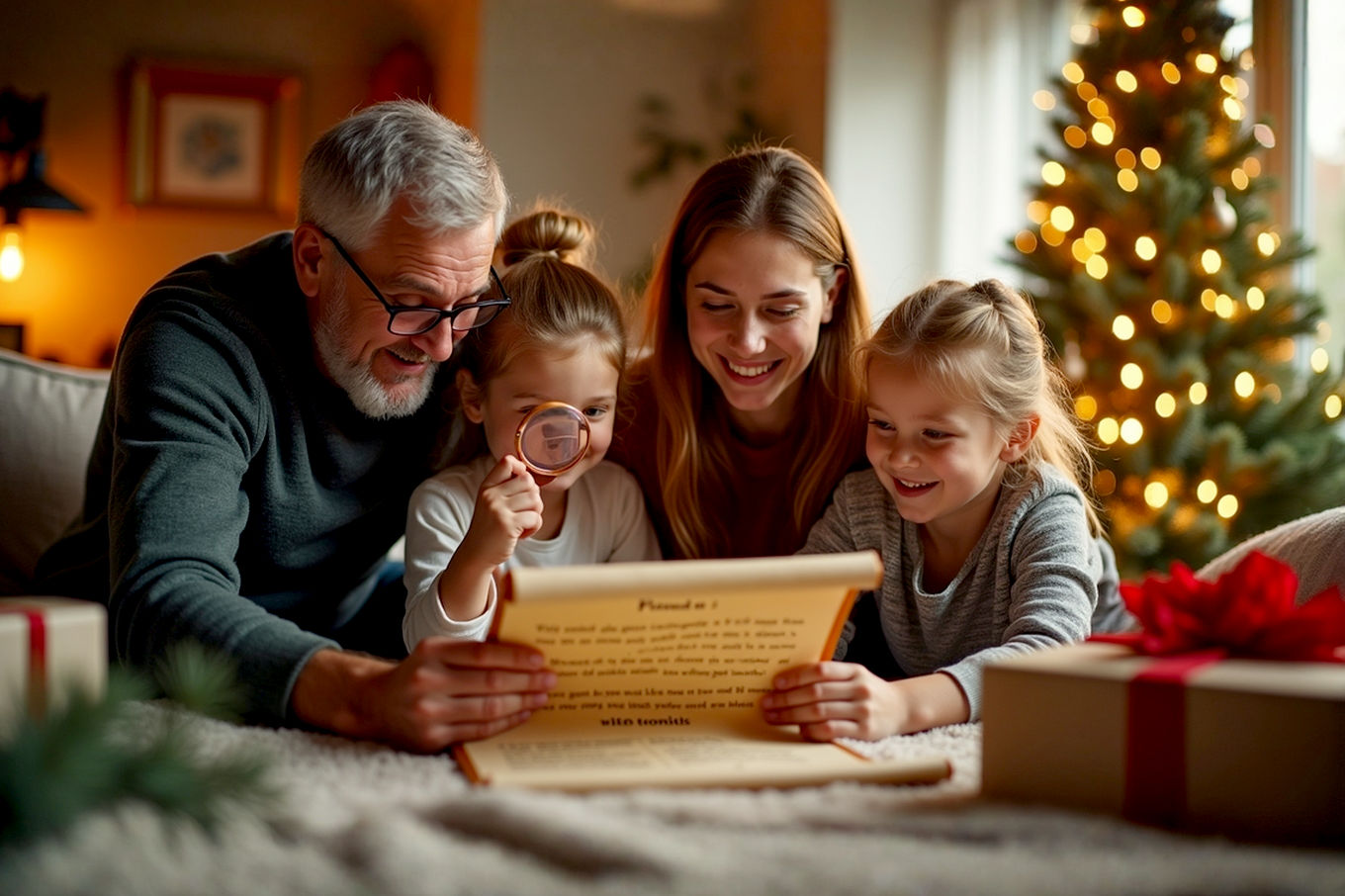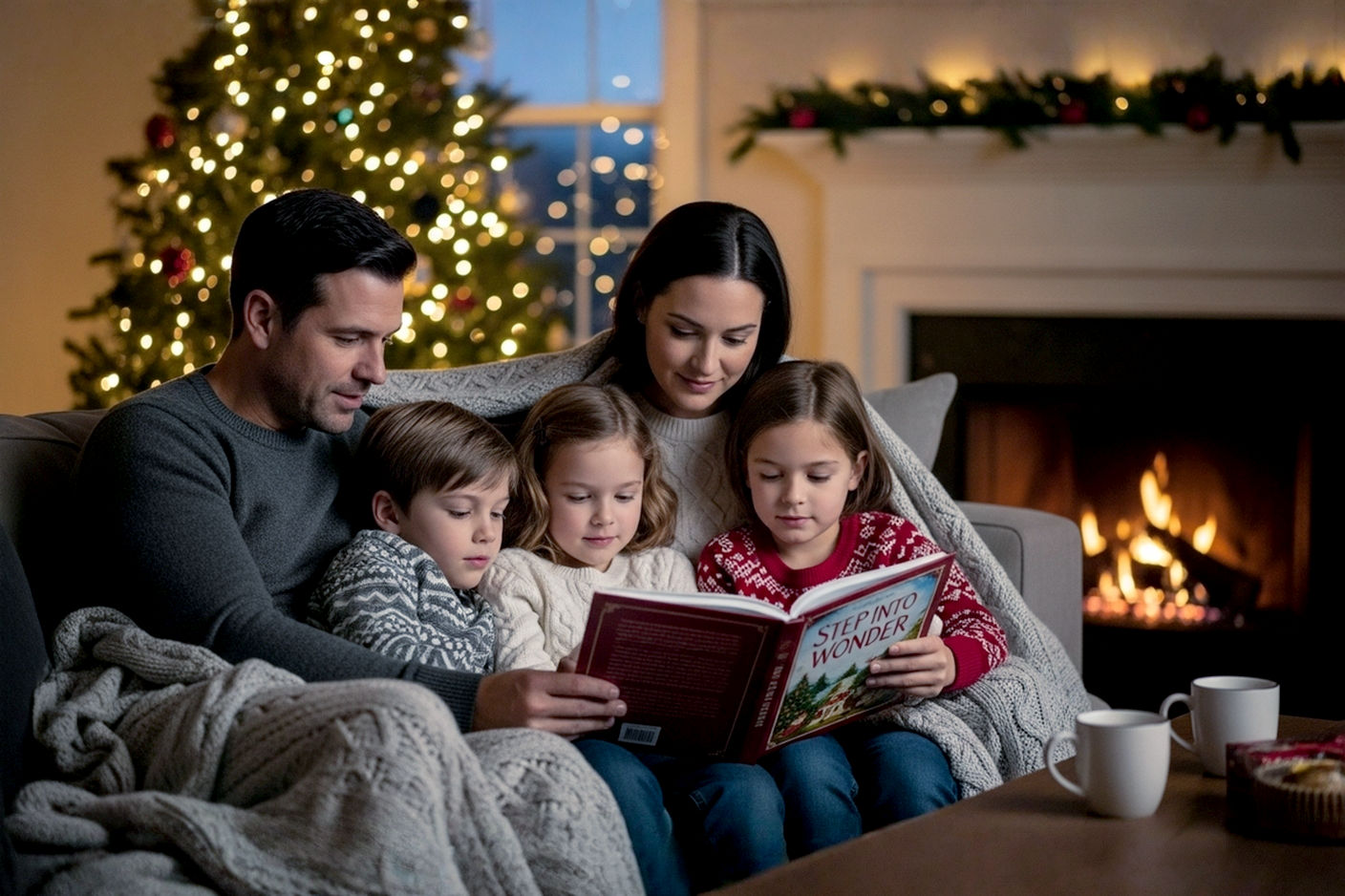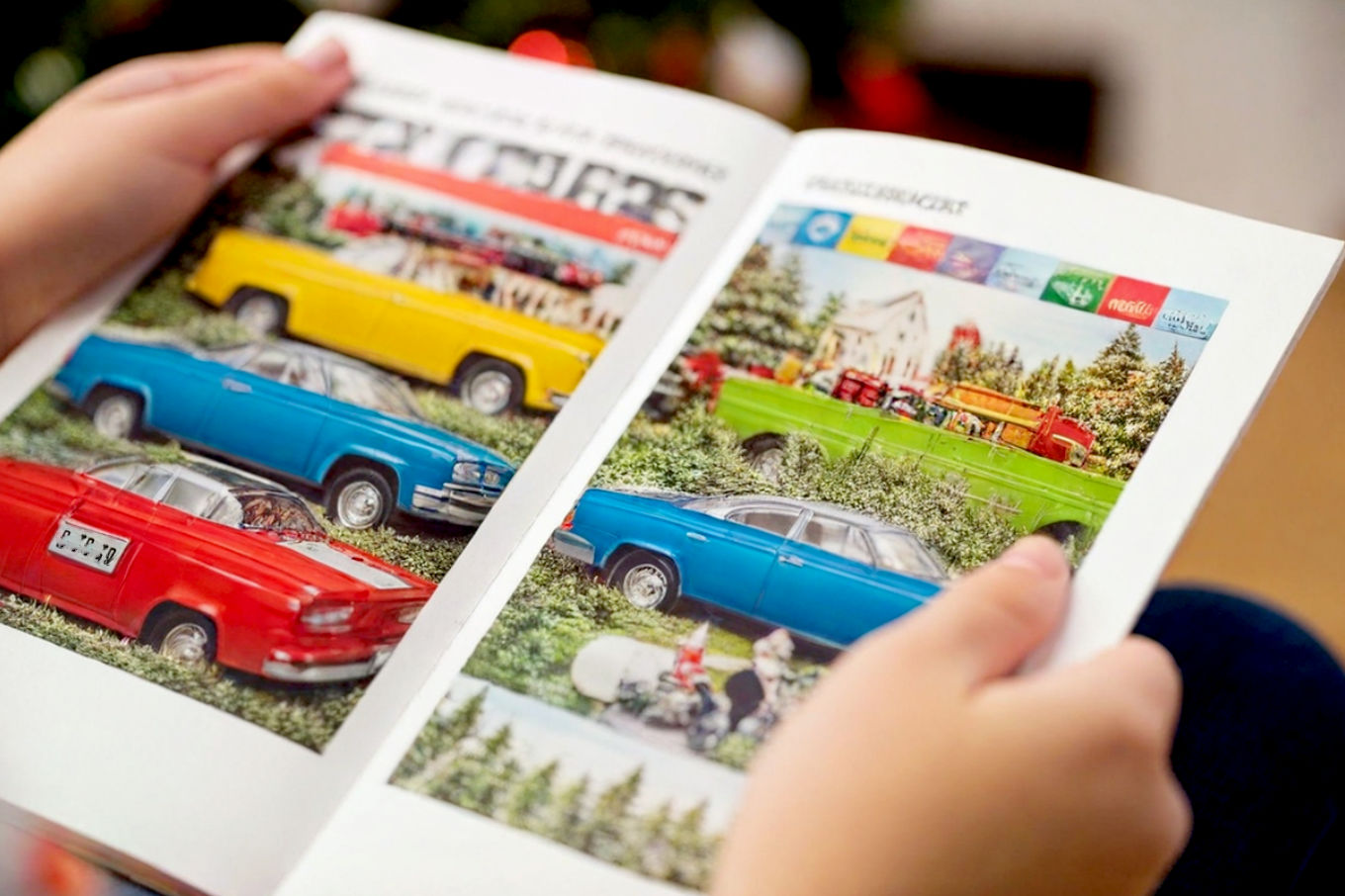This post may contain affiliate links. If you make a purchase through these links, we may earn a commission at no additional cost to you.
For generations, sending holiday greetings has been a cherished tradition. We’ve all received those beautifully designed, often folded, Christmas cards. They arrive in the mail, bringing festive cheer and a connection to loved ones, near and far. But like many traditions, the way we share holiday wishes has evolved. We’ve seen a gradual shift towards more personalized and impactful ways to say “Happy Holidays.”
This evolution brings us to a standout option: the Christmas photo postcard. It’s more than just a piece of paper; it’s a vibrant, personal statement. While traditional cards certainly have their charm, photo postcards offer a unique blend of sentiment, practicality, and modern appeal. They cut through the clutter, delivering a powerful visual message that truly captures attention. You’ll find they don’t just convey a greeting; they tell a story, making your holiday message truly unforgettable.
The Power of the Personal: Why Photos Resonate
A holiday greeting should do more than just deliver a message; it should create a connection. This is where Christmas photo postcards truly shine. They tap into something fundamental about human nature: our deep appreciation for visuals and personal stories.
Emotional Connection and Memory
Think about it: when you receive a holiday card, what do you often look for first? A photo. There’s an immediate, powerful impact when you see a familiar face or a cherished memory. A photo holiday greeting instantly evokes emotion. It might be a picture of your growing family, a snapshot from a recent adventure, or simply a happy moment captured in time. This visual element triggers nostalgia and reminds recipients of shared experiences and bonds.
Unlike generic designs, a personal photograph cuts straight to the heart. It’s a tangible piece of your life, shared directly with someone you care about. This creates a lasting impression, far beyond what pre-printed sentiments can achieve. People don’t just glance at a photo postcard; they often pause, smile, and perhaps even share it with others.
Storytelling Through Imagery
They say a picture is worth a thousand words, and this couldn’t be truer for personalized Christmas greetings. A single photograph can tell a rich story without needing lengthy text. It can summarize an entire year’s highlights in one glance. Did your family welcome a new baby? Did you move to a new home? Did your kids grow up a foot taller? A photo postcard allows you to share these milestones and moments of growth instantly.
It’s more than just a greeting; it’s a mini-update on your life. For friends and family you don’t see often, it’s a window into your world. This visual narrative makes your greeting far more engaging and informative than a simple “Merry Christmas” on a generic card. It transforms a simple holiday wish into a cherished annual tradition of sharing your journey.
Unforgettable and Display-Worthy
Many traditional holiday cards, despite their beauty, often end up in a pile or discarded after the season. But a custom Christmas postcard featuring a personal photo is different. It’s often seen as a keepsake. People tend to display them on refrigerators, bulletin boards, or mantelpieces. They become a part of the holiday decor, a constant, joyful reminder of your connection.
This display-worthiness extends the life of your greeting far beyond the moment it’s opened. It means your message of warmth and connection continues to resonate throughout the holiday season, and sometimes even longer. A well-chosen photo can make your postcard a small piece of art, cherished for its sentimental value and visual appeal. It’s a tangible memory that recipients can revisit again and again.
Practical Advantages: Beyond Sentiment
While the emotional impact of Christmas photo postcards is undeniable, their appeal isn’t just about sentiment. There are significant practical benefits that make them a smart choice for your holiday greetings, from saving money to being kinder to the planet.
Cost-Effectiveness: Smart Savings
One of the most compelling practical reasons to choose holiday photo cards is their cost-effectiveness. When you compare them to traditional folded cards, the savings can add up quickly, especially if you’re sending a large number of greetings.
First, consider postage costs. Standard postcards typically require less postage than a traditional card sent in an envelope. In the U.S., a postcard stamp is generally cheaper than a first-class stamp for a letter. For instance, as of recent postal rates, a postcard stamp might cost around $0.53, while a first-class stamp for a letter could be $0.68. This difference, though seemingly small per item, becomes substantial when you’re mailing dozens or hundreds of cards. For international mail, the savings can be even more pronounced, as postcards often fall into a lower postal category.
Second, printing costs are often lower for postcards. They use less material—just a single sheet of cardstock printed on both sides—compared to a folded card that uses more paper and often requires more complex cutting and folding processes. This simpler production means less material and less labor, which translates into savings for you. Many online printing services offer competitive rates and frequent discounts for photo holiday greetings, making them an even more economical choice.
Finally, you eliminate the need for envelopes. This isn’t just about the cost of the envelopes themselves, but also the time saved in stuffing, sealing, and addressing each one. When you’re sending out a hundred cards, those minutes saved per card quickly add up to hours. The absence of an envelope also means less material waste.
- Technical detail: The U.S. Postal Service (USPS) defines a postcard as being between 3.5 inches and 4.25 inches high and between 5 inches and 6 inches long, with a thickness between 0.007 inches and 0.016 inches. Cards falling within these dimensions qualify for the lower postcard rate. Exceeding these dimensions typically means it will be charged as a letter, so it’s crucial to check the specifications with your chosen printing service to ensure your Christmas photo postcards meet these criteria for maximum postal savings.
Eco-Friendliness: A Greener Greeting
In an age where environmental consciousness is growing, choosing eco-friendly holiday greetings is increasingly important. Photo postcards offer a more sustainable option compared to their traditional counterparts.
The primary environmental benefit comes from reduced paper usage. A postcard is a single, flat piece of cardstock. A traditional folded card, on the other hand, uses at least double the paper for the card itself, plus an additional envelope. This means significantly less raw material is consumed in the production of postcards. Less paper also means less ink is needed for printing, and fewer chemicals are used in the manufacturing process.
Furthermore, postcards are generally easier to recycle. They are typically made from a single type of paper product, without the added complexities of adhesives from envelopes or multiple layers of cardstock that can sometimes complicate the recycling process for more elaborate cards. Many printing services now offer options for photo holiday greetings printed on FSC-certified paper, which means the paper comes from responsibly managed forests, or on recycled content paper, further reducing their environmental footprint.
- Technical detail: The environmental impact of paper production involves several factors, including deforestation, water consumption, and energy use. The pulp and paper industry is one of the largest industrial consumers of water globally. By opting for products that use less paper or recycled content, you contribute to reducing the demand for virgin timber, conserving water, and lowering the energy required for manufacturing. The simplicity of a postcard’s material composition also aids in its end-of-life recycling, ensuring it can be more easily reprocessed into new paper products, thereby closing the loop in the material cycle.
Simplicity and Efficiency: Streamlined Sending
Beyond cost and environmental benefits, the sheer simplicity of sending photo postcards makes them incredibly appealing, especially during the busy holiday season. Time is a precious commodity, and postcards save a lot of it.
Imagine the process: with traditional cards, you open a box of cards, write your message, sign it, fold it, insert it into an envelope, seal the envelope, and then address it. Multiply that by dozens or hundreds of recipients, and you’re looking at a significant time commitment. With Christmas photo postcards, the process is far more streamlined. You simply write your message (or have it pre-printed), add the address, and affix a stamp. There’s no stuffing, no sealing, no licking.
This efficiency makes them ideal for individuals or families with large mailing lists. What might take hours with traditional cards can be completed in a fraction of the time with postcards. Their sturdy cardstock also makes them less prone to damage in transit compared to thinner paper cards in envelopes, ensuring your greeting arrives in pristine condition. Many online services even offer direct mailing options, where they print, address, and mail the postcards for you, saving you even more time and effort.
- Technical detail: The production process for postcards is inherently simpler than for multi-component cards. Postcards are typically printed on large sheets of cardstock using offset or digital presses, then cut to size. Multi-component cards, especially those with intricate folds, inserts, or special finishes, require more complex finishing processes like scoring, folding, and often manual assembly. This streamlined production for postcards contributes to faster turnaround times for printing services and less handling on your end.
Designing Your Masterpiece: Crafting the Perfect Photo Postcard
Creating a Christmas photo postcard that truly stands out involves more than just picking a pretty picture. It’s about thoughtful selection, smart design, and a touch of personal flair. Think of it as crafting a mini-masterpiece that will bring joy to its recipients.
Choosing the Right Photo: More Than Just a Snapshot
The photo is the heart of your postcard, so choosing the right one is crucial. It needs to be visually appealing and evoke the right feeling.
First and foremost, quality matters. Aim for a high-resolution image. This means the photo should have enough pixels to look sharp and clear when printed, not blurry or pixelated. Good lighting is also essential; natural light is often best, illuminating faces and details without harsh shadows. Ensure the focus is clear, especially on faces or key subjects. A blurry image, no matter how heartwarming the moment, won’t print well.
Next, consider composition. Principles like the rule of thirds can help create a balanced and engaging image. Imagine dividing your photo into a 3×3 grid; placing your main subject along these lines or at their intersections can make the photo more dynamic. Pay attention to leading lines that draw the eye, and don’t be afraid to use negative space—the empty areas around your subject—to make the main elements pop.
The theme and mood of the photo should reflect the holiday spirit. This could be a cozy family moment by the fireplace, a playful outdoor shot in the snow, or a formal portrait. Decide if you want a candid, spontaneous shot or a more posed, traditional one. Both can work beautifully, depending on your family’s style.
Finally, think about the subject matter. Most often, it’s a family photo, but it could also be a beloved pet, a stunning landscape from a recent trip, or a significant event that defined your year. Whatever you choose, ensure it’s something you’re happy to share widely and that represents your family well.
- Technical considerations: When preparing your photo for print, understanding file formats is important. JPEG (Joint Photographic Experts Group) is common for photos due to its compression, but ensure it’s a high-quality JPEG to avoid artifacts. PNG (Portable Network Graphics) is good for images with transparency or sharp lines, though less common for general photos. TIFF (Tagged Image File Format) offers uncompressed quality but results in very large files. For professional printing, most services prefer RGB (Red, Green, Blue) color profiles for submission, as this matches how digital cameras capture images. However, printers use CMYK (Cyan, Magenta, Yellow, Key/Black) inks. Reputable printing services will handle this conversion, but understanding the difference helps in anticipating how colors might shift slightly from screen to print.
Layout and Design Principles
Once you have your perfect photo, the next step is to integrate it into a compelling postcard design. Good design enhances the photo and makes your message legible.
Simplicity is key. Don’t overcrowd your postcard with too many photos or too much text. One strong image often has more impact than a collage of smaller, busy ones. The goal is clarity and visual appeal.
Consider text placement carefully. Your message needs to be easily readable. Choose a font that is legible and complements the holiday feel. Serif fonts often convey tradition and warmth, while sans-serif fonts can feel more modern and clean. Ensure there’s enough contrast between the text color and the background photo so the words don’t get lost.
The color palette of your design should complement the photo and evoke holiday cheer. This might mean incorporating traditional reds and greens, or opting for cooler blues and silvers if your photo has a snowy theme. Consistency in color helps create a cohesive look.
For those who like a subtle touch, consider branding (optional). This could be a small, elegant family name or a custom logo if you have one, integrated seamlessly into the design. It adds a professional and personal touch.
Finally, understanding bleed and trim areas is crucial for print. The “bleed” is the area of your design that extends beyond the final cut edge of the postcard. This ensures that when the postcard is trimmed to its final size, there are no unprinted white edges. The “trim area” is where the card will be cut. The “safe zone” is an inner margin where all important text and images should be placed to ensure they aren’t accidentally cut off. Always design with these margins in mind, as specified by your printing service.
- Technical detail: DPI (dots per inch) is a critical measure for print quality. For high-quality printing, images should generally be at least 300 DPI at their final print size. If your image is 72 DPI (common for web images) and you try to print it large, it will appear pixelated. The safe zone is typically a margin of 0.125 to 0.25 inches from the trim edge, ensuring no critical elements are too close to the cut line and risk being trimmed.
Personalizing Your Message: Short and Sweet
The back of your Christmas photo postcard is where your personal message goes. Because space is limited, conciseness is key.
Keep your greetings short and sweet. A simple “Merry Christmas and Happy New Year!” is a great start. You can then add a brief, personal anecdote or a quick update about your family’s year. Perhaps a mention of a big trip, a new job, or a child’s milestone. This adds a warm, personal touch without overwhelming the recipient with too much text.
Your sign-off should be warm and genuine, such as “With love,” “Warmly,” or “The [Your Family Name] Family.” You can choose to have your message pre-printed by the service, which is efficient for large batches, or leave space for a handwritten note, which adds an extra layer of personal connection.
- Technical detail: Many online design tools for personalized Christmas greetings will have character limits for text fields on the postcard back. These limits are in place to ensure readability and proper layout, so it’s wise to draft your message beforehand and ensure it fits within the given constraints.
Utilizing Online Design Tools and Services
The process of creating custom Christmas postcards has been made incredibly accessible thanks to a variety of online design tools and services.
Platforms like Shutterfly, Minted, Zazzle, and Vistaprint are popular choices. They offer user-friendly interfaces that allow you to upload your photos, choose from a vast array of templates, and customize text and layouts. Some services specialize in premium designs, while others focus on affordability and bulk orders.
You can often choose between using pre-designed templates, which offer a quick and easy way to create a professional-looking postcard, or opting for a fully custom design if you have specific creative visions. Most platforms provide robust proofing and review processes, allowing you to see a digital preview of your postcard before it goes to print. Always take advantage of this to double-check spelling, grammar, photo placement, and overall appearance.
Finally, pay attention to turnaround times and shipping options. During the busy holiday season, printing services can experience high demand, so ordering well in advance is advisable to ensure your photo holiday greetings arrive on time. Expedited shipping is usually available but comes at an extra cost.
- Technical detail: These cloud-based design interfaces typically use responsive web design, allowing you to create and preview your postcard on various devices. When you upload your images, the platforms often perform automatic checks for resolution and file format compatibility, sometimes even providing warnings if your image quality is too low for the chosen print size. File submission requirements will vary slightly between services but generally involve uploading high-resolution JPEG or PNG files.
Beyond Christmas: Year-Round Photo Postcard Opportunities
While Christmas photo postcards are undoubtedly a holiday favorite, the versatility and charm of photo postcards extend far beyond the festive season. They offer a unique and personal way to connect with friends and family throughout the year for a variety of occasions.
New Year’s Greetings: A Fresh Start
As the holiday rush subsides, New Year’s greetings offer a wonderful opportunity to send a fresh message. A photo postcard can reflect on the past year’s achievements or memorable moments, while also looking forward to new beginnings. This can feel less pressured than a traditional Christmas card, providing a relaxed way to stay in touch and share your hopes for the upcoming year. It’s a perfect way to send a positive, forward-looking message.
Thank You Notes: Sincere Appreciation
After holidays, birthdays, or special events, a photo postcard makes for a truly memorable thank you note. Instead of a generic card, you can feature a photo from the event itself, or a picture that relates to the gift or kindness received. This adds a deeply personal touch, showing genuine thought and appreciation. Recipients will cherish a visual reminder of the moment they shared with you, making your gratitude even more sincere.
Birth Announcements and Moving Announcements
Major life events deserve to be celebrated and shared in a special way. Photo postcards are an ideal format for birth announcements or moving announcements. For a new baby, a sweet photo of the newborn instantly conveys the exciting news, often with birth details on the back. For a move, a picture of your new home or a family photo taken in the new location can be combined with your new address, making it both practical and a lovely keepsake. These visual announcements are far more engaging than a simple text message or email.
General Greetings and Invitations
Don’t limit yourself to just major milestones. Photo postcards can be used for a wide range of general greetings and invitations. Think birthdays, anniversaries, graduation announcements, or even casual party invites. They bring a personal touch to any occasion, making the recipient feel more connected and excited. For invitations, a relevant photo can set the tone for the event, whether it’s a casual backyard barbecue or a more formal gathering. Their versatility means you can always find a reason to send a personalized photo postcard.
Addressing Common Concerns and Misconceptions
Despite their many advantages, some people might still have reservations about using Christmas photo postcards. Let’s address some common concerns and clear up any misconceptions.
“Are They Too Informal?”
One common question is whether photo holiday greetings are too informal for certain recipients or occasions. While it’s true that a postcard format might feel less formal than a traditional, folded card with an envelope, this isn’t necessarily a drawback. The evolving nature of communication means that personal connection often trumps rigid formality.
For most friends, family members, and even many professional acquaintances, a personalized Christmas postcard is perfectly appropriate. It strikes a balanced tone, conveying warmth and personal connection without being overly stuffy. The key is to ensure the quality of the photo and the printing is high. A professionally printed photo postcard on sturdy cardstock elevates its perceived formality, making it feel substantial and thoughtful. Ultimately, the personal touch of a photo often makes a greater impact than a formal, generic card.
“What if My Photo Isn’t Perfect?”
Another concern might be about finding the “perfect” photo. Many people worry their family photos aren’t professional enough or that they don’t have a recent, flawless shot. However, the beauty of holiday photo cards lies in their authenticity.
You don’t need a professional photographer or a perfectly posed shot. Sometimes, the most charming and memorable photos are candid ones that capture genuine moments. Embrace authenticity over perfection. If your photo isn’t absolutely flawless, you can often make quick edits using basic photo editing software or even built-in tools on your smartphone. Simple adjustments like cropping to improve composition, correcting lighting, or enhancing colors can make a big difference. Remember, the focus is on the sentiment and the connection you’re sharing, not on creating a magazine-quality image. The charm of a real, unpolished moment can often resonate more deeply.
“Is it Hard to Address All of Them?”
For those with large mailing lists, the thought of individually addressing dozens or hundreds of postcards can seem daunting. However, modern solutions make sending photo postcards incredibly efficient.
Many online printing services offer features that significantly simplify the addressing process. You can often upload your address list (typically a spreadsheet file), and the service will print the addresses directly onto the postcards. This eliminates the need for handwriting each address, saving you a tremendous amount of time and effort. Some services even offer direct mailing, where they handle the entire process from printing to postage and sending, further streamlining the task. You can also use address labels if you prefer, which are quick to apply. Batch processing and these integrated services make sending out a large volume of custom Christmas postcards much easier than you might imagine.
Conclusion: Embrace the Photo Postcard Revolution
In a world increasingly dominated by digital communication, the arrival of a physical holiday greeting still holds a special place. And when that greeting is a Christmas photo postcard, it transcends the ordinary, becoming a truly memorable and cherished keepsake. We’ve explored how these vibrant greetings offer a unique blend of personal connection, practical advantages, and creative freedom.
From their ability to evoke powerful emotions and tell your family’s story through imagery, to the significant savings in postage and materials, photo postcards offer compelling benefits. They are a greener choice, reducing paper waste, and their streamlined sending process saves you valuable time during the busiest season of the year. The opportunity to design a truly unique piece of mail, carefully selecting the perfect photo and crafting a concise message, adds to their appeal.
So, as you plan your next holiday greetings, consider stepping beyond the traditional card. Embrace the photo postcard revolution. It’s not just a way to send a message; it’s a way to share a piece of your life, create a lasting memory, and make your holiday wishes truly unforgettable. Make your next greeting a tangible reminder of your connection, a small piece of art that will be displayed and treasured long after the holidays are over.

